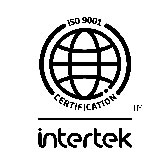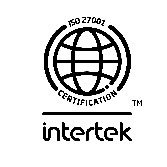Know how Citrix XenServer changed its platform: Plan ahead
- By rpsadmin
- 28-Feb-2019
Technology has seen massive evolution over time, which has successfully led to changes in several areas of the tech landscape for better growth prospects. Virtualization has been one such area which has witnessed a lot of changes and has emerged out stronger and secured in terms of operations and functionality.
Citrix XenServer has been one such open source virtualization platform, which has opened new avenues for deploying, hosting and managing the Virtual Machines (VMs). This has helped in working efficiently amidst the limited hardware availability. Virtualization platforms have not just made things better in terms of efficiency but have also reduced the costs of hardware resources involved in the process.
Citrix XenServer, which is based on Xen hypervisor has witnessed some major changes in its platform in recent times. For those working with Citrix XenServer administration, it is very vital to understand about these platform changes and plan ahead for their future operations.
XenServer 7.6 which is a continued evolution of XenServer Current Release (CR) was derived from the original XenServer 7.1 Long Term Service Release (LTSR), similar to those of XenServer 7.2 and its subsequent versions.
This has been flexible in nature where the customers get to choose between the stability of LTSR or explore the new advanced features which come with CR. These CRs are to be updated within every 4 months of the next CR’s release, offering them the option to skip alternate CRs without losing support. Although there has been an evolution in terms of features with every CR, yet the Hardware Compatibility List (HCL) has remained the same throughout.
Plan ahead of the upcoming major changes
Here are the major changes which were introduced with the latest Citrix XenServer 7.6 and what to expect out of XenServer 8.0 which would be released in the Q1 2019:
- There would be new platform components and significant changes to the Linux kernel in the upcoming major release. This might pose a potential change in the HCL, where the hardware vendors might be required to recertify their servers.
- This change could also lead the vendors to recertify their Network Interface Controllers (NICs) and Host Bus Adapters (HBAs) with the upcoming major release.
So, before upgrading to the XenServer 8.0 it is advisable to go through the HCL and confirm whether the existing hardware in use matches with the upgraded list of hardware compatibility. In the case when the older hardware remain no more compatible with the newer version of Citrix XenServer, here are a few measures which could be taken to adapt the hardware according to the XenServer 8.0 version:
- Upgrade the non-compatible older hardware to the hardware mentioned in XenServer 8.0 HCL.
- For those virtual pools which are running on older hardware, using XenServer LTSR by reinstalling it could be a way to make it run effectively. Make sure you don’t match the XenServer CR and XenServer LTSR pools as it may pose some serious problems.
- Citrix maintains the support to the calls service even when the hardware does not appear on the HCL.
- Despite all, XenServer 7.6 will be fully supported until its EOL (End Of Life) Q2 2019, giving you enough time to understand and adapt to XenServer 8.0.
 +91 9100090012
+91 9100090012 






